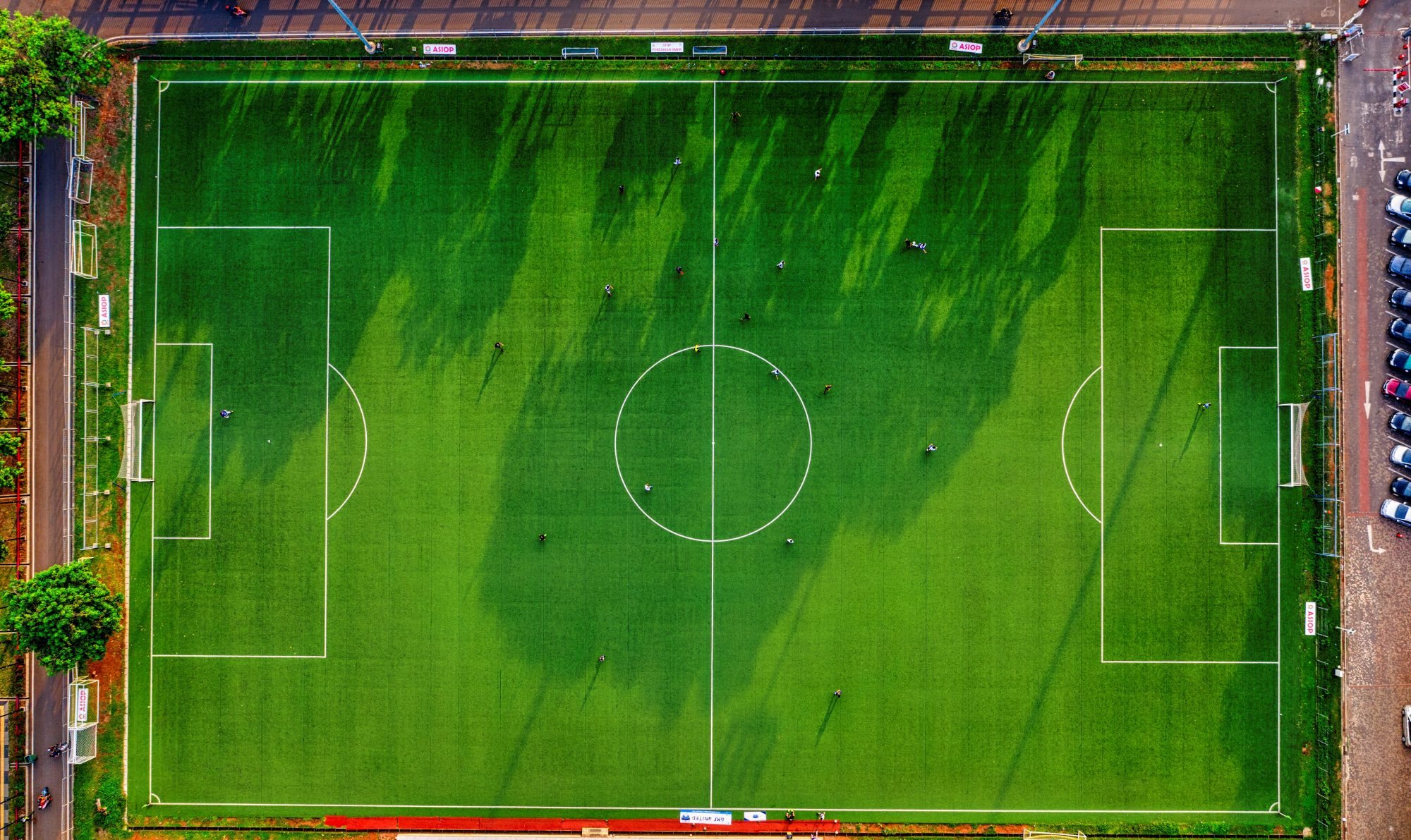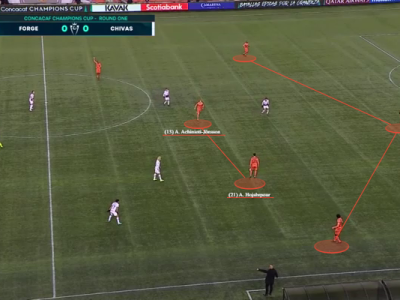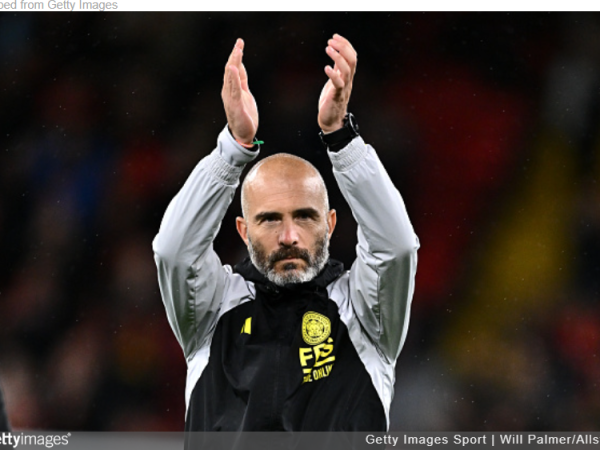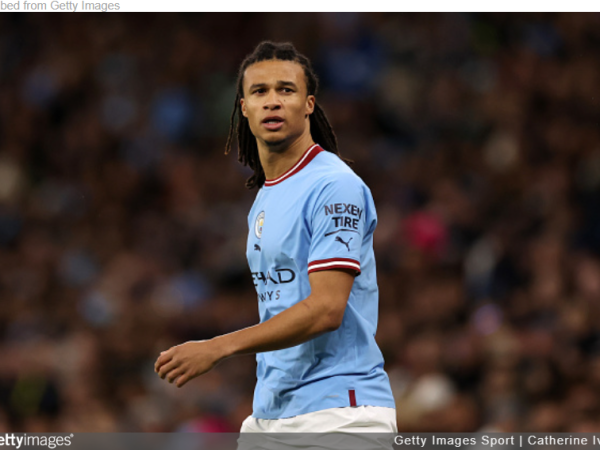One of the most tactically complex teams in world football, no other team could change formation and personnel to the extent that Graham Potter’s Brighton do without suffering any consequences. Through all the constant change, it’s miraculous to think his team have boasted some of the best possession in the league, and one of the soundest defensive structures. The calls continue to come for Potter to move up a level and take on a new challenge, but for now, the British manager has kept Brighton in the top half of the table for the vast majority of the 2021-22 season. Here is our tactical analysis of Graham Potter’s incredible Brighton & Hove Albion.
SYSTEM OF PLAY: 3-4-2-1

Brighton are just about the only team in world football at the moment that can seemingly change shape, formation and personnel on a match by match basis, to zero consequence. All of Potter’s players are flexible, versatile and capable of not only playing but understanding several different positions in several different formations. While the downside is that the team are unable to develop consistency in shape and personnel, the upsides are massive. Opposition teams hardly ever know how Brighton are going to set-up, let alone play, which makes them all the more difficult to stop. Further, players rotate in and out of the squad on the basis of who will be the best fit for each specific task, constantly allowing players to stay fresh and avoid injury. So while Potter and his men are able to scrutinize over every detail of their opposition, including formation, style of play, and personnel, no opposition team is able to do the same to them. Take this past week (end of December 2021) as a perfect example.

Brighton identified the 4-4-2 Diamond as an excellent fit against Brentford, rather than matching their customary 3-5-2 to Thomas Frank’s. The tactic worked like a charm in their 2-0 win, and Potter’s men found the best way to outnumber Brentford’s midfield, while still having enough cover in wide areas (2v1’s created by RCM + RB or LCM + LB). They matched Brentford’s two strikers with two defenders of their own, and looked to exploit the Bees’ back-three with two strikers looking for space in between the gaps and on the outside in between wing-backs and centre-backs. It was a brilliant adaptation in the moment, particularly when you consider Brighton hadn’t deployed a midfield diamond all season long. They then adapted again two days later against Chelsea, matching Chelsea’s 3-4-2-1 with a 3-4-2-1 of their own, in which they effectively controlled wide areas and much of the possession (52%), against a side normally very dominant in both regards. Out of possession, the shape floated more into 3-5-1-1 or 3-5-2 as Jakub Moder dropped into the midfield line, which stopped Chelsea from penetrating central channels, and allowed Brighton a greater frequency of ball recoveries.
Embed from Getty ImagesOne of the most remarkable things about Brighton, in a near Guardiola Man City manner – every single player can play at least two or three positions and shuffle around like a deck of cards depending on the formation. Robert Sanchez is just about the only man who never changes, although no one’s really told him that he’s actually a goalkeeper, given that he spends so much time outside his own penalty area acting as another centre-back in the build-up (more on that to come). Then you have Lewis Dunk, who spent most of his time as the middle centre-back last season, but this season has actually played more on the left of the three, accommodating the return of Shane Duffy back into the team. Webster’s had to bide his time from the bench but has still played an important role, alongside the big man Dan Burn, who’s been afforded the opportunity to play more centre-back this season after the club finally signed another proper left-wing-back. That proper left-wing-back happens to be one of the team’s best players now – Spanish defender Marc Cucurella, who’s accumulated the third most minutes for the Seagulls this season. A fantastic summer signing who’s importance has only grown with time, Cucurella will be of particular interest as we dissect Brighton’s attack later on.
Embed from Getty ImagesOn the other side, Potter’s had the tough decision between the more attack-minded, pacey Tariq Lamptey, and the more defensively sound and stable Joel Veltman. Given that the Dutchman can also play as a centre-back, that decision has been made easier in recent weeks. But then there’s also Solly March, who can effectively play in either wing-back role, which could push Cucurella into midfield or into the back three, where he performed admirably against Chelsea. In central midfield, Potter’s selection headaches continue. He has fantastic distributors like Adam Lallana and Pascal Groß, mobile box to box midfield runners like Jakub Moder and Enock Mwepu, an obvious destroyer in Yves Bissouma, and an elegant creative type in Alexis Mac Allister. That gives Potter so many different options to use to his advantage on a match by match basis, where his fluid formations and flexible systems flourish.
Embed from Getty ImagesAhead of the midfield unit, Potter has found more consistency, deploying high pressing duo Neil Maupay and Leandro Trossard more often than not, with Danny Welbeck an additional goal threat who can enter the frame. Lamptey, March, Groß, Mac Allister and Moder can all play in that attacking line as well, if Potter wants to get complicated again. With so many players seemingly in favour and so few out of favour, Brighton’s task to adapt formation and deploy different players each match becomes all the easier.

Their top played formation this season has actually been the 3-5-2, but we perceive the 3-4-2-1 as the shape that tends to bring them the most success, and the one we see the team using long-term this season. But unlike most of our other analyses, we won’t be fully examining how Brighton work within one or two specific systems of play. We will instead attempt to uncover their over-arching principles of play regardless of shape, personality and structure. Let’s jump right into it.
BUILD-UP
Embed from Getty ImagesBrighton & Hove Albion have been superb in possession this season, only increasing their meticulous build-up shown in 2020-21. The Seagulls have completed the 4th most passes per game this season, behind only the Premier League’s top three sides. But unlike the three sides above them, they’ll complete a higher percentage of long passes, and often look for a more direct route in their build-up. So when they’re not circulating the ball around the centre-backs, working the angles to progress forward, they can bypass an opposition’s defense on the drop of a dime, giving their strikers or attacking midfielders something to chase in half-spaces. They use this approach more often when Adam Webster’s in the team, with the 26-year-old possessing fantastic range and accuracy. He’s completed more passes into the final third than any Brighton player, often more eager to make a riskier pass than Dunk and Duffy, who have even more successful rates at completing long passes.

With that said, Brighton’s short passing game is also stellar, and they are fully comfortable keeping the ball against even the best sides in the league. Most recently they kept 52% of the ball away at Thomas Tuchel’s Chelsea, a monumental rarity for the Blues.
When playing in a back four, Brighton’s fullbacks will often start as high as they would in a back-three, hugging the touchline in the wide areas. Robert Sanchez will then become the third member of their build-up as the centre-backs shuttle wide. They can then increase the options they have out from the back with fullbacks drifting toward the ball and coming closer, not to mention the midfield pivot of Lallana and Bissouma. Lallana in particular will drift toward the ball and play in the Jorginho role for the Seagulls, completing Brighton’s build-up diamond and constantly communicating about where his teammates should pass.

That means Brighton will consistently build out from the back with a 3+1 shape, with Robert Sanchez often involving himself as part of that three, or as an extra member if a back-three is already in place, as the middle centre-back makes room for him to join their line. The goal through all of this is to find nice angles to thrust the ball forward to Brighton’s talismanic figures – Leandro Trossard and Neil Maupay. Maupay in particular will look to leave his marker and support build-up processes, which then means he can arrive late into vacated space if Brighton are successful in moving up the pitch from there.

Brighton will also deploy much in the way of positional play out from the back, as they do in attack, with players adjusting their position to respond to the movement of their teammates. For example, Marc Cucurella played high and wide as the left-centre-back in the team against Chelsea, which often meant Solly March tucked inside. Against Brentford, Cucurella would frequently make underlapping runs, and Trossard would hold a wider position instead. Neil Maupay meanwhile often chased loose balls down the flank at Stamford Bridge, and Alexis Mac Allister and Jakub Moder would respond by adopting a central position in his stead. This level of positional play only increases the variety at which Brighton build out from the back. They can play short, long, or even carry the ball into the opposition’s half when the time is right, through powerful dribblers like Lamptey or Cucurella. It’s no mystery why they’ve boasted the fourth best possession statistics in the Premier League this season, as opposition sides can’t find a way to stop them from passing the ball around. If they could only turn that positive play into goals, Brighton would be an unstoppable force.
ATTACKING PRINCIPLES
Embed from Getty ImagesIt’s no secret that if Brighton could improve one aspect of their game, it would be their ability to find the back of the net. The Seagulls create a fair amount of chances, have stellar possession and always look dangerous, but 17 goals in 18 matches says everything you need to know about their end product. It’s why many fans suggest they need a new striker who can hammer home the goals, but that task is difficult given how much positive work Maupay and Trossard do off the ball, particularly when pressing.
Embed from Getty ImagesBrighton’s attack will take on many different shapes and forms depending on their own formation. Some of the more common shapes include a 2-3-5 (predominantly when deploying any kind of back-four formation), and a 3-2-5 (predominantly when deploying a back-three formation). Lallana is usually the deepest-lying playmaker in the team in those shapes, with Bissouma holding a reserved role more out of proactive defending than to be of massive importance in possession. At times and particularly in a back-three, Lallana will also venture forward to give it more of a 3-1-6 look, where Bissouma is the only midfield man not joining the attack. Bissouma’s fantastic in transition all on his own, and Brighton will be extra careful in compacting the distance between the lines in these situations, proactively setting up to defend against counter attacks.
Embed from Getty ImagesSo with a high-flying shape in mind and several men forward, Brighton look to work the wide areas. They try to create overloads or 2v1 situations where they can outnumber an opposition fullback, with a slight preference toward the left side. That’s the side where Cucurella and Trossard often work their magic, Brighton’s two top men in terms of touches in the attacking third and carries into the final third. Both are dynamic dribblers, as is left-sided central midfielder Yves Bissouma, and Brighton will often break pressure through dribbling once in the attacking half. They can also use the pace and power of Lamptey on the right to trouble the opposition and win fouls, and Lallana is another silky smooth dribbler who often works the right channels. Regardless of which side they look to exploit, Brighton will often shuffle over as a unit, while leaving at least one player to switch play. The wing-backs often combine with a central midfielder, an attacking midfielder and/or a striker, to create overloads in the wide areas and find avenues forward, and this is where they’ve enjoyed so much possession this season.
Embed from Getty ImagesThe variety in their play will also extend to the final third, with the midfielders looking for random moments to catch the opposition off guard, and find a striker in between a gap. This is how Enock Mwepu unlocked Brentford’s defense for Brighton’s first goal of the day, when Leandro Trossard ran in behind and lobbed it over the keeper. As we mentioned earlier, Maupay’s deeper role often means he’s arriving late to the party and then letting it rip from range. That’s how Brighton bagged their second goal of the night, and in fact, the Seagulls have hit over 40% of their shots from outside the eighteen this season. While it looks beautiful when it works, it’s not exactly the poacher’s type of goal you might want a player like Maupay to score. Brighton have had just 4% of their shots come inside the six yard box this season, the lowest of any team in the league. It’s not just that they want to shoot from range, but also that they struggle to get into the kinds of positions where they have the best chance of scoring goals. Their possession is beautiful, and they’ve taken on a reasonably high amount of shots, just not the right kinds often enough.
One actionable item for Graham Potter to consider would be to work on his side’s speed of play in transition. Maupay and Trossard can be adept at pushing an opposition back-line and running wild up the field when their side win the ball, but the Seagulls often opt for dribblers or patient passing in these moments instead of breaking quickly and spraying long passes forward. There’s a Guardiola rule where a certain amount of passes need to take place to develop team rhythm and unbalance an opposition block. Perhaps Potter subscribes to that view, but we suggest he focus on how his team can be more clinical in attacking transitions, and use the pace and power they pose out wide for good, and for evil. The bottom line is that they need to turn their possession into goals, otherwise a Europa League place, something Potter’s team could realistically challenge for, will be out of the question.
DEFENSIVE PRINCIPLES
Embed from Getty ImagesPerhaps the most encouraging thing about Brighton & Hove Albion, and a major reason why their low goal tally doesn’t matter all that much – they have an absolutely stellar defense. The personnel in place are all more than capable of being top half defenders, and in Yves Bissouma + Robert Sanchez, Brighton have one of the best defensive midfielders and one of the best goalkeepers in the league.
Embed from Getty ImagesIn a low to mid-block, Brighton compact the lines and limit their opposition any ability of progressing out wide or through the centre. They’ve commonly adopted a 4-4-2 or 4-4-1-1 low block when playing back-four formations this season, and you will more commonly see them shaping up in a mix of 5-4-1, 5-3-2 or 5-3-1-1 structures in a back-three. Regardless of shape, the distance in between the lines is always minimal and they always defend as a collective unit, shuffling together. With incredible strength and power in the air to match, Brighton are incredibly adept at defending crosses into the box. The wing-backs will often combine with outside central midfielders to stop crosses from coming in to begin with, and Bissouma roams around in central areas to clean up any messes that come his way.
Brighton have won the third most tackles per game in the league this season (18.3), an impressive feat for a side so high in possession. In the rare moments opposition teams are able to break them down, you’ll see the likes of Dunk and Duffy throwing themselves in the way. Potter’s men have completed the fourth most amount of blocks this season, with Dunk himself the 4th best in the league in that regard.
Embed from Getty ImagesWhen pressing higher up the pitch, Brighton are equally effective at stopping their opposition from playing. The pressure from Maupay, Trossard and the likes in behind often force the opposition to play longer passes, which as we know, Brighton are adept at winning. Only Burnley have won a higher percentage of their aerial duels than Brighton, and many more of their duels are in attack. Their high press can turn the back-five into more of a back-three, as the team step up together. On goal kicks, Yves Bissouma will also venture ahead of his midfield partner, in more of a 3-1-5-1 or 5-1-3-1 shape.
Embed from Getty ImagesIn the wide areas they form the same diamond shapes they form in attack, trapping the opposition into errors. But the one peculiar thing about Brighton’s press is the space they leave in between the lines when in a high-block. In all other moments of the game, attack and defense, they compact the field and operate in close proximity to one another. When pressing high, that changes. The defenders and usually a midfield two won’t step up quite as high. The benefits to this are obvious. We spoke recently about how Antonio Conte’s Tottenham have frequently been able to expose a high press by hitting a ball over the top of their opposition’s high-line. Brighton don’t allow that to happen, as their defensive line sits low, and then challenge well with anything that comes their way. They also don’t have to worry quite as much about playing their opposition on-side as they would in a higher line, under the assumption that they’re intentionally keeping opposition forwards on-side already. But still, you have to wonder why a team would do this when they could opt for compactness in a high line instead. Having space available between the lines means that if the strikers are not up to code with their press, well…space is available.

Opposition strikers could for example drop deep in the build-up and take advantage. Manchester City took full advantage of this space through positional rotation and intelligent movement patterns, and that was undeniably Brighton’s worst game of the season. Thankfully for the Seagulls, their high press has still been successful, and with the likes of Bissouma stepping up to cover that sort of space, Brighton have the second most successful press in the league (behind only Liverpool). It’s all helped to culminate in just 18 goals conceded in 18 games, the fifth best in the division.
CONCLUSION
Embed from Getty ImagesGraham Potter’s Brighton continue to be one of the most tactically complex, tactically intriguing teams in world football. No other team could change formation and personnel to the extent that they do without suffering consequences, and that’s something Graham Potter has to be commended for. Through all of that change, they’ve been incredibly successful at defending all areas of the pitch in all phases of the game, conceding just 1 goal per game. Going the other way, their attack has been underwhelming, and they’ve struggled to get into the kinds of areas that would help them score more goals. But then again, they boast some of the most impressive possession and passing statistics in the league, playing some beautiful football that half makes up for their failures in front of goal. Brighton could challenge for a Europa League position if they could just get one of their strikers firing, but for now, they sit in a comfortable 10th place, full of excitement for what Potter could do in the second half of the season.
So there it is! A tactical analysis of Graham Potter’s Brighton & Hove Albion. Be sure to check out more of our Premier League analyses, and follow on social media using the links below. Thanks for reading and see you soon!
You might also enjoy our 2020-21 analysis of Graham Potter’s team, where we analyzed their surprising amount of long-balls, the 3-1-6, the role of Bissouma and so much more.
How I created a football tactics empire
In 2016, I started TheMastermindSite.com as a passion project, writing about whatever interested me at the time. Five hundred articles and five years of coaching experience later, I had created one of the biggest platforms in the tactics/analysis space, certainly by a sole proprietor. Now going on 1,200 articles, I deep-dive into how I created…
Game of Numbers #37 – Forge FC’s use of centre-backs in midfield like Manchester City
For the unfamiliar, Forge FC are the Manchester City of the Canadian Premier League. They play a possession-based 4-3-3, stacked with ball-savvy savants, and a culture that embodies winning. The Canadian Premier League’s been around since 2019 now. Forge have won the Playoffs in four of the five seasons, and lost the final in the…
Enzo Maresca – Leicester City – Tactical Analysis
It has been a season to remember for Leicester City inside the Championship. They’ve been one of the league’s all-time top sides, and look fully prepared to hit the mark if they can keep hold of their star power leading into next season. Enzo Maresca and his team have done a brilliant job in assembling…
Why centre-backs are becoming fullbacks: The tactical trend that defined 2023
It might be wrong to credit this tactical approach to Pep Guardiola. After all, the origin story to the ‘fullback’ is because the defender was fully back. However, in operating with a centre-back that steps up into midfield, Guardiola also created a construction within his team that regularly positioned centre-backs out wide. From then on,…






18 thoughts on “Graham Potter – Brighton & Hove Albion – Tactical Analysis (2021-22)”